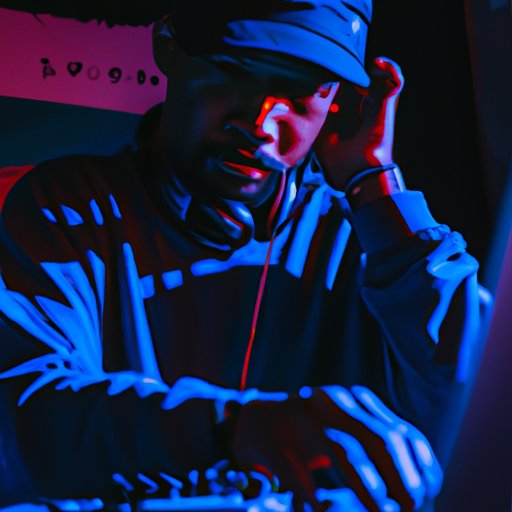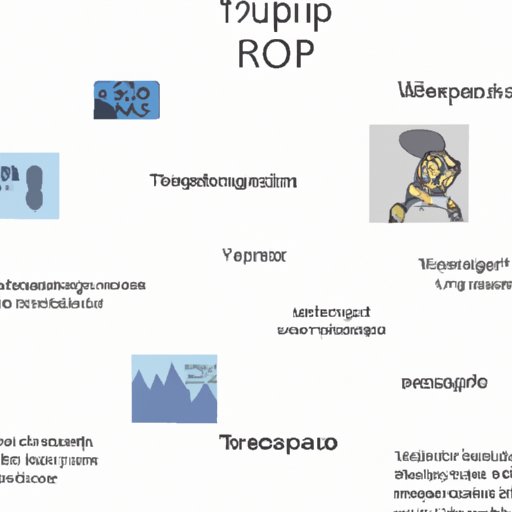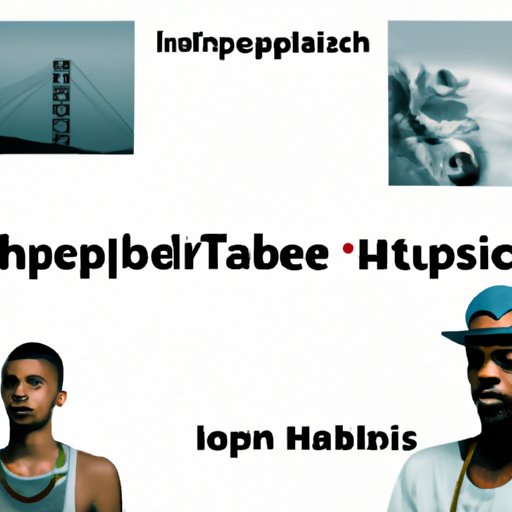Introduction
Trip hop is a genre of music that emerged in the early 1990s and quickly became one of the most influential and popular musical styles of the decade. The genre combines elements of hip hop, electronic music and jazz, creating a unique sound that has been described as “lush, atmospheric and downtempo”. Throughout its history, trip hop has evolved and adapted to different regional influences, leading to the emergence of new subgenres and the crossover success of some of its most iconic artists.

Exploring the Origins and Evolution of Trip Hop
The origins of trip hop can be traced back to the late 1980s when the Bristol-based group Massive Attack released their debut album Blue Lines. This album was seen as a major breakthrough for the genre, combining elements of hip hop, dancehall, dub and electronica to create a unique sound. The success of Blue Lines paved the way for other groups such as Portishead, Tricky and Smith & Mighty, who all helped to shape the sound of trip hop in the early 1990s.
In the mid-1990s, the genre began to expand into different countries, with France being one of the first to embrace it. French trip hop artists such as Air, Wax Tailor and Chinese Man helped to develop the genre and bring it to a wider audience. Other countries such as Japan, Germany and Australia also began to produce their own trip hop music, blending local influences with the core elements of the genre.
Throughout its evolution, trip hop has been heavily influenced by other genres such as jazz, dub, funk and soul. These genres have all played a part in shaping the sound of trip hop, and many of the genre’s most iconic songs have been the result of combining elements from multiple genres. As the genre continues to evolve, it is likely that these influences will remain a key part of its sound.

A Guide to Essential Trip Hop Artists and Albums
Trip hop has produced some of the most iconic musicians and albums of the last few decades. Here is a guide to some of the essential trip hop artists and albums that have helped to define the genre:
Notable Artists
- Massive Attack – one of the pioneers of trip hop and best known for their albums Blue Lines (1991) and Mezzanine (1998).
- Portishead – one of the most successful trip hop acts of all time, best known for their albums Dummy (1994) and Third (2008).
- Tricky – an experimental artist who has released a number of acclaimed albums including Maxinquaye (1995) and Pre-Millennium Tension (1996).
- Air – a French duo who are best known for their albums Moon Safari (1998) and Talkie Walkie (2004).
- Wax Tailor – a French producer who has released a number of acclaimed albums including Tales of the Forgotten Melodies (2005) and Dusty Rainbow From the Dark (2012).
Popular Albums
- Blue Lines – Massive Attack (1991)
- Dummy – Portishead (1994)
- Maxinquaye – Tricky (1995)
- Moon Safari – Air (1998)
- Tales of the Forgotten Melodies – Wax Tailor (2005)

Analyzing the Influence of Trip Hop on Other Genres
Trip hop has had a major influence on other genres, particularly hip hop and electronic music. The fusion of hip hop and electronic music has been a key element of trip hop since its inception, and this fusion has been used by many artists to create new sounds and styles. Notable examples include the work of Dr. Dre and Timbaland, who both combine elements of hip hop and electronic music in their production.
The emergence of new subgenres such as trip hop, chillout, drum and bass and breakbeat have also been heavily influenced by trip hop. These genres have all taken elements of trip hop and combined them with their own unique sounds and styles, creating entirely new forms of music. Furthermore, many of these genres have gone on to achieve mainstream success, with artists such as Daft Punk and Fatboy Slim becoming household names.
Trip hop has also had a major influence on popular music, with many of its artists achieving crossover success. Massive Attack, Portishead, Tricky and Air are all widely recognized as some of the most influential and important acts of the last few decades, and their music has been embraced by fans of all genres. In addition, many of the genre’s most iconic songs have become staples of radio playlists around the world.

Examining the Role of Trip Hop in Popular Culture
Trip hop has had a major impact on popular culture, influencing everything from fashion to film and television scores. The genre’s signature sound has been used in a wide range of films and television shows, from Hollywood blockbusters to independent productions. Notable examples include the use of Massive Attack’s music in the hit TV show House of Cards and Portishead’s music in the cult classic film The Adventures of Priscilla, Queen of the Desert.
The influence of trip hop can also be seen in fashion, with designers such as Alexander McQueen, Vivienne Westwood and Jean Paul Gaultier all drawing inspiration from the genre. In addition, the genre has become closely associated with street art and graffiti, with many of its most iconic images being used to decorate walls and buildings around the world.
Finally, trip hop has had a major role in political movements, with many of its most iconic songs being used as anthems for various causes. For example, Massive Attack’s song “Unfinished Sympathy” was used as an unofficial anthem for the anti-war movement in the UK, while Portishead’s song “Sour Times” was used as an anthem for the LGBTQ+ rights movement.
Investigating the Relationship Between Trip Hop and Visual Media
Trip hop has always had a close relationship with visual media, with many of its most iconic songs being accompanied by striking visuals. Music videos have become an essential part of the genre, with many artists creating innovative and eye-catching videos to accompany their songs. In addition, a number of short films have been created to explore the themes and sounds of trip hop, with notable examples including Michel Gondry’s The Science of Sleep (2006) and Spike Jonze’s I’m Here (2010).
The relationship between trip hop and visual arts is also worth exploring, with many of the genre’s most iconic images being used to create stunning pieces of artwork. Many of these images have become synonymous with the genre, and they continue to influence visual artists around the world.
Comparing the Sounds of Trip Hop Across Different Countries
As trip hop has expanded into different countries, it has taken on different forms and adapted to different regional influences. This has led to the emergence of new subgenres, such as French trip hop and Japanese trip hop, each with its own unique sound. By exploring the sounds of trip hop across different countries, we can gain a better understanding of how the genre has evolved and adapted to different cultures.
When comparing the sounds of trip hop across different countries, it is interesting to note the similarities and differences in the lyrics and sounds. For example, French trip hop often features more downtempo beats and slower tempos than other countries, while Japanese trip hop often features faster tempos and more upbeat melodies. Similarly, British trip hop often features a greater emphasis on dub and reggae influences, while American trip hop often features heavier hip hop influences.
Investigating the Production Techniques of Trip Hop Music
The production techniques used in trip hop are as varied as the genre itself, with producers using a variety of methods to create their music. Sampling and synthesis are two of the most common techniques used, with producers often sampling existing recordings or creating their own samples and synthesizing them to create unique sounds. Layering and reverb are also commonly used, allowing producers to create rich and textured soundscapes.
Drum programming is another important technique used in trip hop production, with producers often programming intricate and complex rhythms to create a unique groove. Finally, effects such as delay and distortion are often used to give tracks a distinctive and unique sound.
Conclusion
Trip hop is a genre of music that has had a major impact on popular culture. Its fusion of hip hop, electronica, jazz and other genres has created a unique sound that has been embraced by fans of all genres. The genre has produced some of the most iconic artists and albums of the last few decades, and its influence can be seen in everything from fashion to film scores. The genre has also spawned a number of subgenres and helped to create a whole new generation of artists.
The legacy of trip hop is an undeniable one, and its influence can still be felt today. From its origins in the early 1990s to its current status as a major influence on popular culture, trip hop has come a long way and there is no doubt that it will continue to shape the sound of music for years to come.
(Note: Is this article not meeting your expectations? Do you have knowledge or insights to share? Unlock new opportunities and expand your reach by joining our authors team. Click Registration to join us and share your expertise with our readers.)
